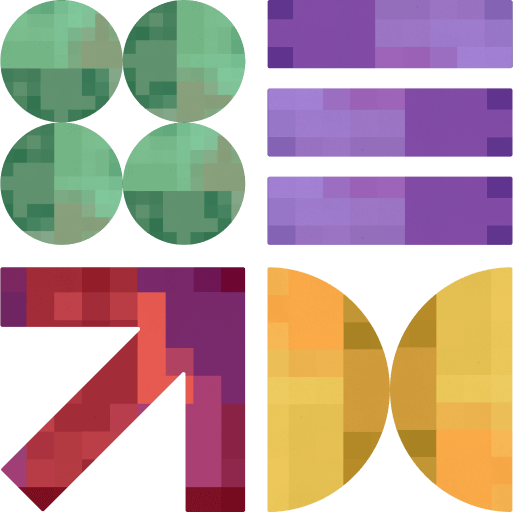How Much Does Custom Software Development Cost in Saudi Arabia?

Custom software can drive massive efficiency and scale, but the price tag? That’s where things get tricky.
Whether you’re a startup in Riyadh or an enterprise in Jeddah, understanding the custom software development cost in Saudi Arabia is key to setting the right expectations and making smart budgeting decisions.
And that’s what the following lines aim to help you with. Scroll on for a breakdown of actual cost ranges, the factors that influence pricing, and how to save without compromising on quality.
The Software Development Cost Breakdown
The cost of developing custom software in Saudi Arabia can vary widely depending on the scale, complexity, and who you hire.
But the price isn’t just about the product, it includes everything from ideation and design to development, testing, deployment, and ongoing support. The biggest variables are –
- Scope of features
- Backend infrastructure
- Tech stack (e.g., .NET vs Node.js)
- User interfaces (web, mobile, both)
- Integration with third-party APIs
- Team experience and location
That said, here’s a rough cost breakdown based on market rates and recent regional projects:
| Project Type | Estimated Cost (SAR) |
|---|---|
| Simple App (Single platform) | SAR 50,000 – SAR 150,000 |
| Medium Complexity System (CRM, ERP) | SAR 150,000 – SAR 400,000 |
| High-End Solutions (Fintech, AI) | SAR 400,000 – SAR 1,000,000+ |
💡 Your custom software cost can be lean or lavish; depending on how you scope it. The number one rule to remember during scoping is to perfect your custom software cost estimation. While reasons vary, some mistakes are usually at the core of this costly blunder. And if you wish to avoid its repercussions, you should steer away from them.
How to Save on the Cost of Custom Software Development in KSA
A website doesn’t need to be expensive to be effective. But smart decisions early on can make all the difference.
Here are practical tips that’ll help you keep your custom software development cost low, without compromising on quality.
1) Start with a Clear Scope
Scope creep is the biggest cost killer, and one of the easiest traps to fall into. Without clear boundaries, a project can spiral into a never-ending wishlist of features and integrations.
Start by defining your business goals. Use the answers for the following questions to formulate them –
- Are you solving an internal process bottleneck?
- Are you building a new revenue stream?
- Are you enhancing accessibility for your users?
Document the features you need, who they serve, and why they matter. This keeps your team aligned and reduces back-and-forth during development.
Before diving into features or layouts, align stakeholders on what the project should achieve – faster workflows, increased sales, better usability, etc. Next, map user journeys to identify which content, functionality, and design elements are truly essential.
2) Choose the Right Engagement Model
In Saudi Arabia’s fast-moving tech landscape, how you structure your engagement can make or break your software budget. Many businesses work within one of three models: proof of concept (POC) development, IT staff augmentation, or full project outsourcing.
- POC development is ideal for testing ideas with minimal risk, allowing you to validate features and user demand before committing to a full build, keeping your cost to develop software lean.
- IT staff augmentation works best if you already have an in-house team but need to scale quickly. You retain control while gaining access to specialized skills for a fixed period—useful for hitting aggressive timelines without long-term hires.
- Project outsourcing is the most hands-off model. Here, a dedicated team manages the full lifecycle, i.e., from discovery to deployment. It’s perfect for companies without internal dev resources, or those running large, multi-phase projects under Vision 2030.
3) Don’t Overbuild in Phase One
You don’t need to do everything at once. In fact, trying to launch so much in one go often causes delays, team burnout, and a higher custom software development cost.
Focusing on essential functionality first can help you launch faster and significantly reduce your costs. Many projects in Saudi Arabia, particularly those aligned with Vision 2030 benefit from an MVP-first strategy.
For example, several Saudi FinTech startups began with just mobile interfaces before scaling to full web portals.
4) Leverage Open-Source Frameworks to Lower Cost to Develop Software
You don’t have to build everything from scratch. One of the smartest ways to control your development costs is by leveraging open-source frameworks like MEAN or MERN.
These frameworks come with built-in modules for authentication, routing, data handling, and more, saving both time and licensing fees.
MEAN and MERN stacks, in particular, offer a unified JavaScript ecosystem that simplifies maintenance and speeds up delivery.
5) Invest in Good UI/UX Early
It’s tempting to skip design in the early stages, but a confusing interface can lead to frustrated users, increased support costs, and reduced adoption. With user expectations rising across Saudi Arabia’s B2B and B2C markets, investing in thoughtful UI/UX from the start isn’t optional; it’s strategic.
Start with clear wireframes or prototypes to catch usability issues before they become costly. Engaging designers early ensures your product is intuitive, accessible, and conversion-ready. Plus, a strong user experience builds trust, especially critical in sectors like fintech, healthcare, and logistics.
💡 If you want to see how much UI/UX design matters in justifying software development cost breakdown, take a deeper dive into understanding the software development life cycle design phase. Understanding it will help you understand how it shapes the way users interact with your software, and therefore how successful it will be. A well-designed interface doesn’t just “look nice”; it reduces user errors, speeds up onboarding, boosts engagement, and increases retention. All of these translate into tangible business value such as higher conversion rates, fewer support calls, and better customer loyalty.
6) Base Your Decisions on Customer Insights
Guesswork is expensive, but data is not.
When you base design and feature decisions on actual user behavior, you avoid wasting time and money on elements that don’t impact outcomes.
So, review heatmaps, user flows, exit pages, and analytics. See where users are dropping off or getting stuck. Also, conduct user interviews or short surveys to get user input.
7) Prioritize Post-Launch Maintenance
Ongoing maintenance is often ignored in the budgeting phase. However, it’s absolutely crucial that you don’t fall for this trap.
Set aside at least 15%–20% of your total custom software cost annually for:
- Security patches
- API updates
- Hosting and backups
- Bug fixes
While it may feel like an extra expense, this investment protects your software from downtime, cyber threats, and performance issues.
And in Saudi Arabia’s growing digital ecosystem, where user expectations are rising and regulatory requirements are tightening, proactive maintenance isn’t just smart, it’s necessary.
Let’s Build Smarter Software – Not Just Expensive Software
Custom software development is a smart investment when done right, but it can easily become a money pit when rushed or poorly scoped.
At DPL, we work closely with clients in Riyadh, Jeddah, and across the Kingdom to develop software that’s scalable, secure, and built for your local business environment. Whether you’re launching a new product or streamlining operations, we’ll help you minimize waste and maximize ROI.





